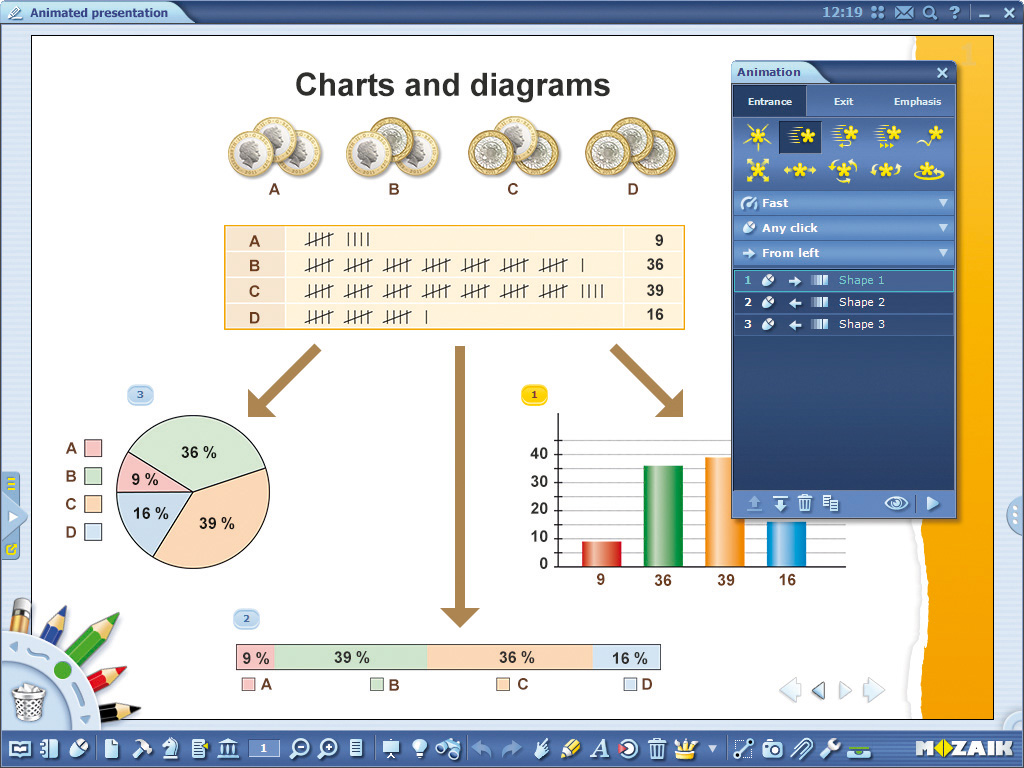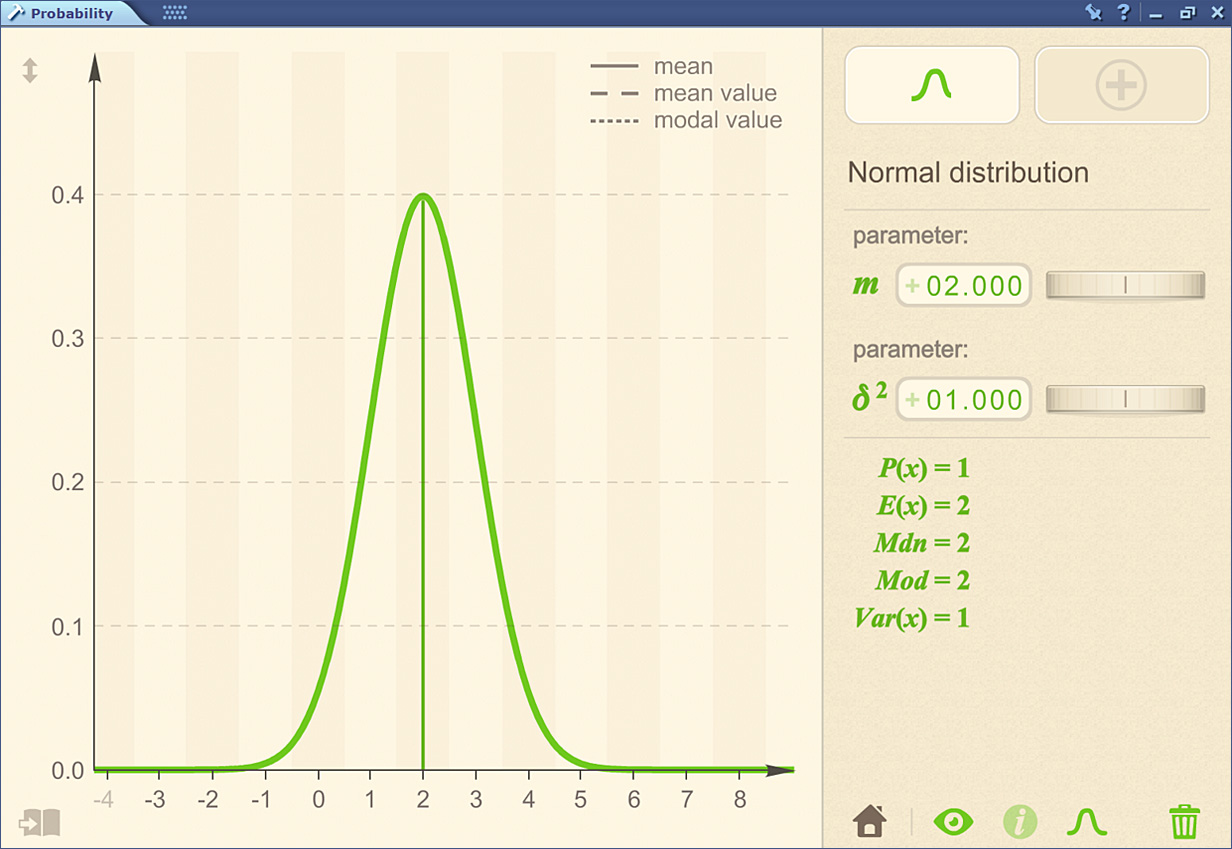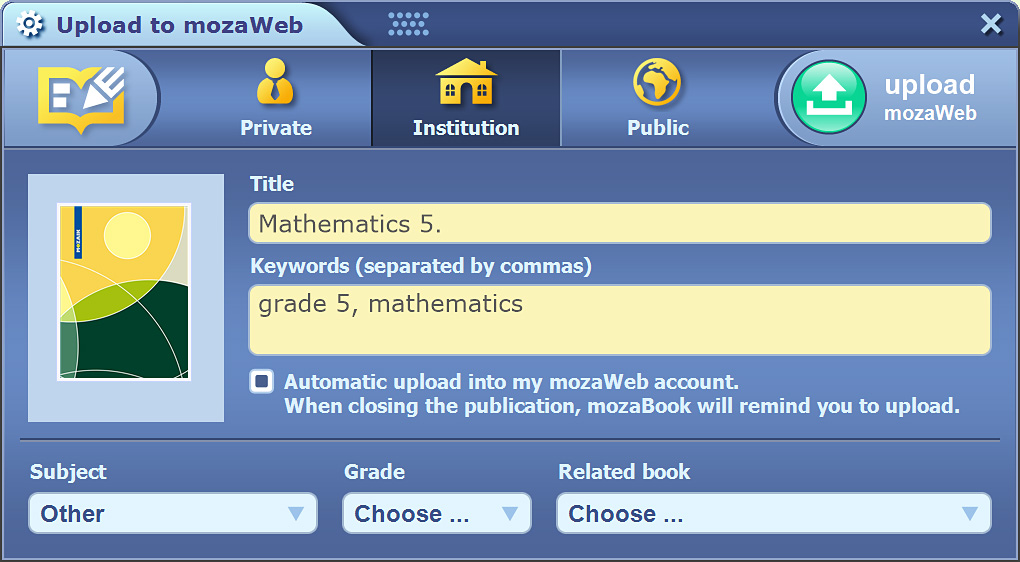mozaBook Exercise books are wonderfully suitable for making classroom presentations and lesson plans. Along with text content we can use our own photos or images from the Internet, the image bank found in textbooks, the built-in drawings, illustrations from the mozaBook Gallery, videos as a material source for presentations. However, we can also insert the mozaLibrary 3D models and the mozaBook tools.

If all this was not enough for raising pupils' interest, the animation is still to come. All the items of an exercise book can be animated. We can choose from entrance and exit effects and other exciting playful schemes. We can set the speed and direction of animations and we are able to adjust the timing of the appearance and disappearance of elements. We can start the popping out of 3D models, videos and tools, and after having finished their use, we can continue with the animated presentation.
Looking for ways to use today's great technology to make a greater impact on your students? We have four hints for using technology successfully in your classroom - no matter which subject you teach.
1. Vary your videos
Think back...way back... to when you were a student. Ah, those were the days! Although as I recall, many of my teachers chose one particular series of videos to show every week. Spanish class, biology, physics: VHS was a popular way to teach. A series can be great in terms of structure, but we humans like variety. If kids are rolling their eyes every time your favorite scientist comes onto the screen, why not mix it up and show some supplementary videos from a new source?
Mix animation and live action videos. Try videos from light-hearted amateur chemists online combined with the more serious, professionally filmed experiments. Better yet, combine videos with an entirely different type of digital resource.
This is for all the statistics freaks out there! The tool we are showing you today, called Probability, was created by one of our developers who is a mathematician from Cambridge University.
The beautiful and practical design of this app make it so that the teacher can always display the charts and the equations behind these charts simultaneously - this really helps students see how the two connect and therefore grasp concepts more swiftly. What’s more, if you change the equation, you can automatically see that change translated into the diagram.

Most pupils are interested in learning about their own body and about how it works. We can project videos and use wall boards, drawings and photos meaning there are unlimited possibilities for visualizing these topics during lessons. When the opportunity arises we can also make observations relevant to lab practices, such as dissections, using a microscope, etc.
When we are interested in showing tissues, more specifically human blood, we always face the difficulty of taking microscopic photos of thin sections, of preparations; consequently pupils have difficulty recognizing tissues in space, or they are not even able to perceive how a tissue works. These problems can be solved with the help of a 3D animation made about human blood.
During the opening scene we get inside the blood flow where the blood components and their movement are represented. We can rotate it, making it more lifelike and so we feel like real viewers. Tip: Let's discuss it with pupils by how many times we should shrink ourselves to be able to observe blood flow this way.
 You have certainly encountered the following problem in teaching. Does it ring a bell when students have difficulties with imagining what you are talking to them about? Sometimes it would be great to travel back in time so that you can actually show them the events and objects that they learn about during lessons. Now you are given the opportunity to show them with 3D animations and tools available. These can be used in a lesson with which you cannot only raise your students’ interest but you can also make your lesson spectacular. Meanwhile, the material becomes incredibly easy to teach.
You have certainly encountered the following problem in teaching. Does it ring a bell when students have difficulties with imagining what you are talking to them about? Sometimes it would be great to travel back in time so that you can actually show them the events and objects that they learn about during lessons. Now you are given the opportunity to show them with 3D animations and tools available. These can be used in a lesson with which you cannot only raise your students’ interest but you can also make your lesson spectacular. Meanwhile, the material becomes incredibly easy to teach.
The following lesson plan provides you with ideas to teach the geography of Great Britain.
1. Let’s show the role of the Industrial Revolution and technical innovations in the development of traditional heavy industry sectors.
“The industrial revolution evolved in the island country in the 17-18th centuries. Several inventions were patented that diversified production. One of them was the steam engine perfected by James Watt.”
Applying Watt’s Steam Engine (18th century) mozaik3D Interactive model we can get familiar with the engine’s structure, with the operation of some of its parts and with circumstances of development. Let’s look at the narrated Animation first. Then, clicking on Edit we can drag the engine with our mouse and look at it in various views. In the toolbar above, if we click on rotate the image can be locked in any view. In this way, further drawings and texts can be added to make the material clearer for students.
For years, the exercise books that we prepared at home could be saved to our school computer only with the help of various data media, furthermore, we could bring school exercise books home merely on a USB drive. In the latest mozaBook version there is already the possibility to synchronize exercise books through the Internet and save them automatically into our own on-line account. We can also manually upload exercise books from time to time as to this account then open it when logged-in at the last updated point.

A more comfortable solution is to authorize automatic saving. With this, after closing our exercise books, the modifications performed within them are automatically saved into our on-line account. Consequently, the latest version of the desired exercise book will always open on each and every computer on which mozaBook is installed.


